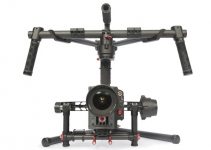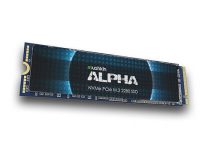Even your current best mirrorless cameras are limited in maximum frame rates. Take the Sony a7S III. Right now, the fastest frame rate you can get is 240 fps in Full HD. That’s good in today’s market and for many people an option that is plenty good for most things. With some preparation and smart post-production, you can give that number a little boost.
Filmmaker Alexandru Don has his own process that will allow you to effectively create the look of 1,000 fps video with the a7S III. It’s not even limited to that, as the technique can be applied to any number of cameras and alternate frame rates.
Keep in mind, this isn’t a fancy hack for the camera – the a7S III is still only ever going to max out at 240 fps. The trick is how you manipulate your settings and then address the footage in post to realize the look of faster frame rates.
Step one is to set the camera up for 240 fps shooting and then when selecting your settings opting for a much higher shutter speed than you might normally pick. In this case, Alexandru goes for 1/4000 second as the shutter speed. The higher you can go the better. Reason being that the post-production software will see clearer details in the footage to extrapolate from when stretching out the 240p native shot into 1000 fps.
Doing this will require some serious lighting. Slow-motion shooters already recognize the need for more powerful lights when they shoot. This is because you naturally need faster shutter speeds and need to pump up the lights accordingly. And since this method requires fast shutter speeds you’ll want more light. Just make sure they are flicker-free at these frame rates.
Samples show that it can work super well. It’s not perfect as you can see some waviness and weirdness in the fine details of a lot of stuff. However, it can work for quick insert shots or on rare occasions without anyone noticing anything.
Working in DaVinci Resolve, Alexandru takes the clip and uses the Retime Curve tool. Selecting Retime Speed and Retime Frame as parameters you can use the keyframe editor to apply some in/out points to the tool. Dragging it down will slow down the points in the in/out points.
One trick here is to actually speed up the parts before the serious slowdown as it will emphasize the effect without looking unnatural. What you will then want to do is apply another keyframe in the previous section and then apply a simple curve to smooth out the transition. Do it on both ends.
Now, in the Inspector you should head to the Retime and Scaling section and set Retime Process to Optical Flow and the Motion Estimation to Speed Warp. Now, you should use the render cache to get a preview of the effect. Now you can preview and check it out and if you are lucky that is the end of the road.
This process is hard on the computer so you’ll want to be aware that applying the effect might take a good bit of time. Still, the results look great and if you want to create the occasional ultra-slow-motion clip this is an easy-to-use technique.
What did you think of the effect?
[source: Alexandru Don]
Order Links:
- Sony a7S III Mirrorless Camera (B&H, Amazon, Adorama)
- Blackmagic Design DaVinci Resolve Studio (B&H, Amazon, Adorama)
Disclaimer: As an Amazon Associate partner and participant in B&H and Adorama Affiliate programmes, we earn a small comission from each purchase made through the affiliate links listed above at no additional cost to you.



